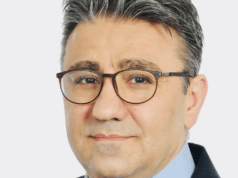
“PERT care is the coalition of the willing,” quipped Dennis Gable, a vascular surgeon at Texas Vascular Associates in Plano, USA. He was referring to team-based care for pulmonary embolism (PE) patients and how, unlike acute stroke intervention and ST-elevation myocardial infarction (STEMI) care, PE lacks a clear owner specialty in the setting of pulmonary embolism response teams (PERTs), which represent multidisciplinary care characterised by easy accessibility, rapid response and individualised consensus-driven treatment. Gable was making the case that vascular surgeons are well poised to assume the mantle of a pivotal role during Management of Pulmonary Embolism: Fundamentals and Advances, a special session that took place during the Society for Vascular Surgery’s 2023 Vascular Annual Meeting (VAM; 14–17 June, National Harbor, USA).
“There is no specialty that has really stepped up and said we are going to own the right heart and lung, and a lot of people don’t want to deal with PE altogether—they want to send that to the specialty centres of which we are growing in number,” he told attendees.
PE is a problem whose scope is significant, with many centres lacking the ability to treat this patient population, Gable observed. The importance of “team” in PERTs is paramount, he emphasised. “That entails not only vascular surgery, which is an important part of this and a key member, but also cardiology, interventional radiology, your ER [emergency room] physicians, pulmonary critical care and CT [cardiothoracic] surgery.”
Based on his team’s institutional experience, the establishment of a PERT was associated with “significantly higher utilisation” of catheter-directed interventions, less major bleeding events and reduced in-hospital and 30-day mortality, Gable said. “Overall, our data suggest a definite advantage for a full multidisciplinary team to treat these patients.”
Data from 2016 demonstrated that vascular surgery involvement in PERTs was not among the top contributors to PE care teams. Gable said he was not aware of more recently published data mapping out the specialty’s current role but believes it likely now is the second or third top contributor.
He contrasted this with an allusion to CT surgery’s diminished role in cardiac catheterisation: “Our CT colleagues, when cardiac catheterisation came out, they were so busy with development and initiation of cardiac surgery, they gave up the cardiac catheterisation to cardiology primarily,” Gable explained. “They took a role of standby operator backing up the interventionalists—but currently that is no longer existent in most centres.”
“PERTS have demonstrated the value for patient survival and decreased utilisation of critical care resources,” Gable concluded. “Vascular surgeons have demonstrated expertise in this arena and treatment space. Vascular surgery is, and should be, a key member of the PERT team. And, to maintain branding as a vascular specialist and for our specialty overall, should remain and strive to be leaders in the area.”
Elsewhere, Gable also referenced the emerging role of artificial intelligence (AI) in PE care, and how machine learning can shave considerable time off the process of determining management for individual patients. AI algorithms allow treatment determinations to be established in “a more rapid fashion,” he noted.













